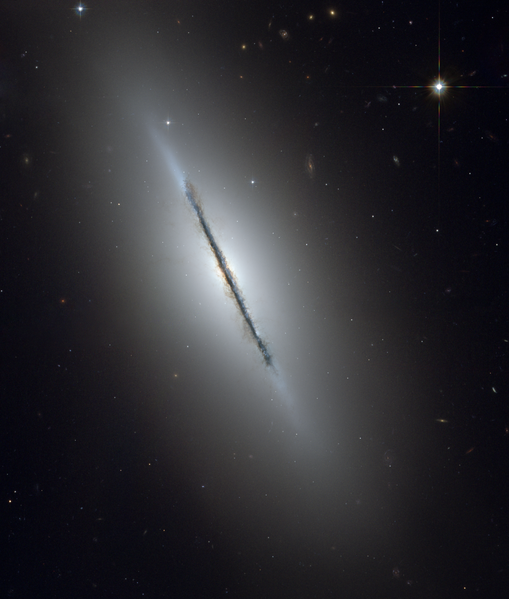Файл:Ngc5866 hst big.png

Памер папярэдняга прагляду: 509 × 599 пікселяў. Іншыя разрозненні: 204 × 240 пікселяў | 408 × 480 пікселяў | 652 × 768 пікселяў | 870 × 1 024 пікселяў | 1 739 × 2 048 пікселяў | 3 190 × 3 756 пікселяў.
Арыгінальны файл (3 190 × 3 756 кропак, аб’ём файла: 25,78 MB, тып MIME: image/png)
Гісторыя файла
Націснуць на даце з часам, каб паказаць файл, якім ён тады быў.
| Дата і час | Драбніца | Памеры | Удзельнік | Тлумачэнне | |
|---|---|---|---|---|---|
| актуальн. | 21:38, 16 лютага 2009 |  | 3 190 × 3 756 (25,78 MB) | Spencer | {{Information |Description={{en|1=From original NASA press release: :This is a unique view of the disk galaxy en:NGC 5866 tilted nearly edge-on to our line-of-sight. Hubble's sharp vision reveals a crisp dust lane dividing |
Выкарыстанне файла
Наступная 1 старонка выкарыстоўвае гэты файл:
Глабальнае выкарыстанне файла
Гэты файл выкарыстоўваецца ў наступных вікі:
- Выкарыстанне ў ab.wikipedia.org
- Выкарыстанне ў ace.wikipedia.org
- Выкарыстанне ў af.wikipedia.org
- Выкарыстанне ў af.wikibooks.org
- Выкарыстанне ў af.wikiquote.org
- Выкарыстанне ў af.wiktionary.org
- Выкарыстанне ў ak.wikipedia.org
- Выкарыстанне ў als.wikipedia.org
- Выкарыстанне ў am.wikipedia.org
- Выкарыстанне ў am.wiktionary.org
- Выкарыстанне ў ang.wikipedia.org
- Выкарыстанне ў ang.wiktionary.org
- Выкарыстанне ў an.wikipedia.org
- Выкарыстанне ў an.wiktionary.org
- Выкарыстанне ў arc.wikipedia.org
- Выкарыстанне ў ar.wikipedia.org
- Выкарыстанне ў ar.wikibooks.org
- Выкарыстанне ў ar.wikinews.org
- Выкарыстанне ў ar.wikiquote.org
- Выкарыстанне ў ar.wikisource.org
- Выкарыстанне ў ar.wikiversity.org
- Выкарыстанне ў ar.wiktionary.org
- Выкарыстанне ў arz.wikipedia.org
- Выкарыстанне ў ast.wikipedia.org
- Выкарыстанне ў ast.wiktionary.org
- Выкарыстанне ў as.wikipedia.org
- Выкарыстанне ў av.wikipedia.org
- Выкарыстанне ў ay.wikipedia.org
- Выкарыстанне ў ay.wiktionary.org
- Выкарыстанне ў az.wikipedia.org
- Выкарыстанне ў az.wikibooks.org
- Выкарыстанне ў az.wikiquote.org
- Выкарыстанне ў az.wikisource.org
- Выкарыстанне ў az.wiktionary.org
- Выкарыстанне ў bat-smg.wikipedia.org
- Выкарыстанне ў ba.wikipedia.org
- Выкарыстанне ў bcl.wikipedia.org
- Выкарыстанне ў be-tarask.wikipedia.org
- Выкарыстанне ў beta.wikiversity.org
- Выкарыстанне ў be.wikibooks.org
- Выкарыстанне ў be.wikiquote.org
Паказаць глабальнае выкарыстанне гэтага файла.

